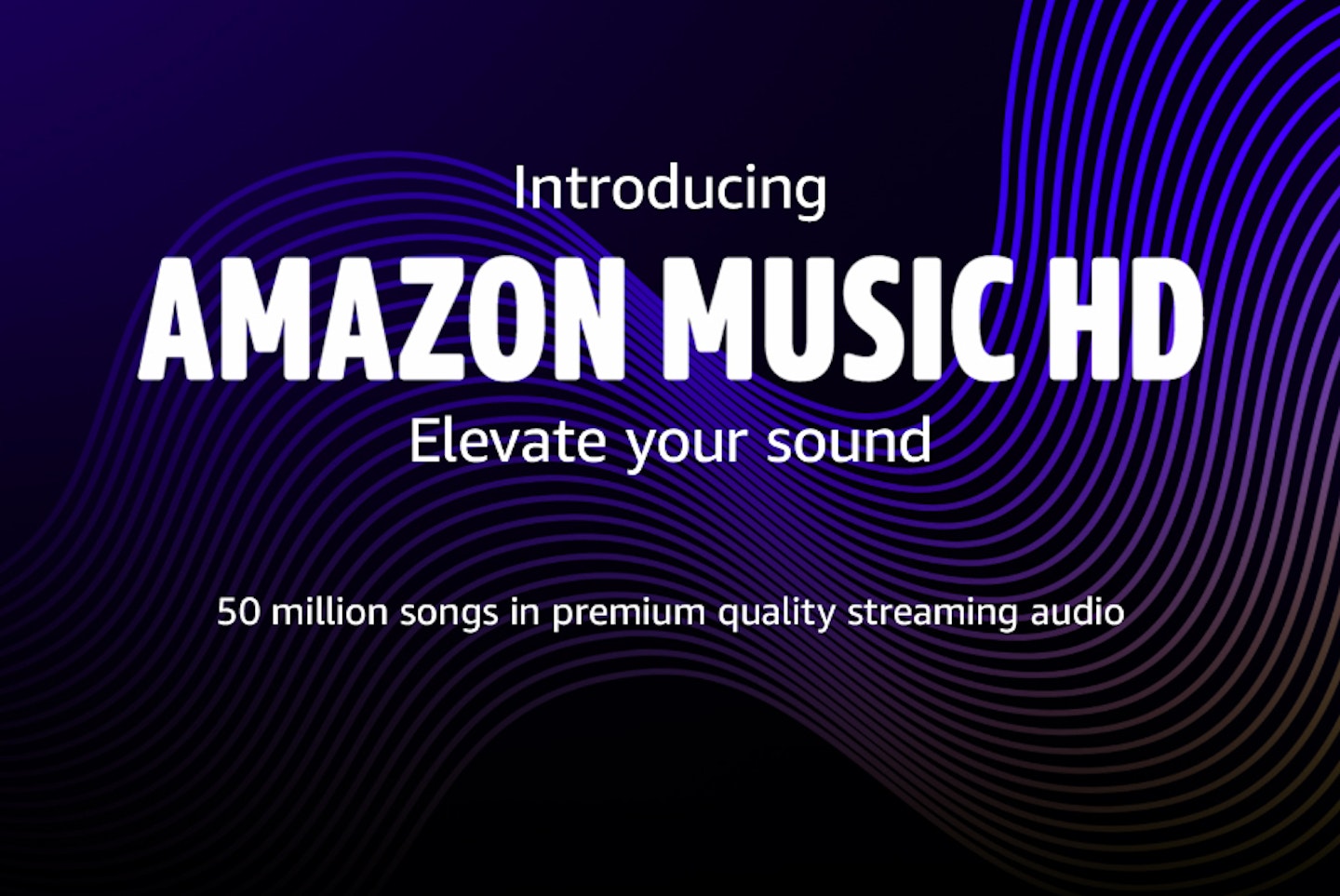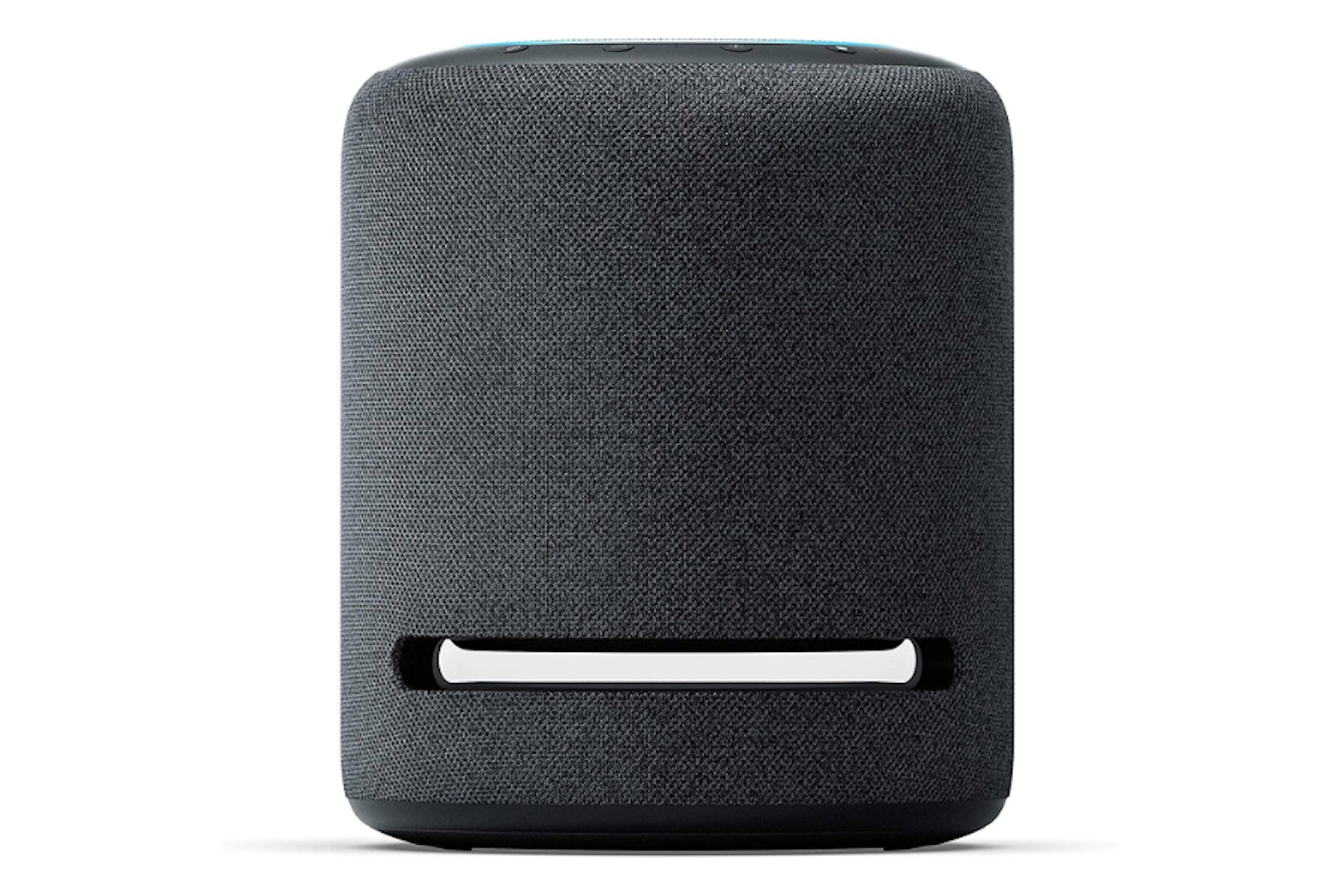Wave goodbye to compromised audio streaming. With 50 million tracks in High Definition and millions more in Ultra HD, you can now stream your favourite songs and albums in a quality astoundingly close to the original recording. Amazon Music HD makes immaculate HD, lossless audio affordable for the everyday listener. If you're an audio purest who likes nothing more than listening to your favourite albums on a record player, then this service will put a smile on your face when you'r away from you precious setup.
The best way to know what is going on with Amazon Music HD, one of the best music streaming services, is to try it out and feel the difference, but if you’re into the tech-specs or have any questions about the specifics and tech details, read on for some more in-depth information.
Amazon Music HD
 1 of 1
1 of 130-Day Free Amazon Music HD
Subscription after 30-day free trial is just £12.99/month for Prime members or £14.99/month for standard Amazon customers. Existing Amazon Music Unlimited subscribers (Individual or Family Plan) can upgrade to Amazon Music HD for an additional £5/month.Subscription can be cancelled at any time. Be sure to read the terms and conditions.
What’s standard streaming?
Standard streaming is the quality of audio that is typically sent to you from your streaming provider. The maximum quality, often under the setting ‘High Quality’, is sent at around 320 kpbs. This audio is compressed to achieve this relatively small data size. It has served us well up until recent times, but the quality is lacking compared with what is now available.
What is High Definition and Ultra High Definition streaming?
These streaming types allow for the streaming of higly defined lossless audio. HD streams at a rate of up to 850 kbps, and UHD goes as high as 3730 kbps. If you compare this to standard streaming’s modest 320 kbps, you can start to appreciate the huge amount of information that the new streaming definitions can provide. This translates to one thing – massively improved sound quality.
What’s lossless music?
To store and stream audio files, they are compressed. This means that all the parts a machine thinks you can’t hear are removed from a sound file, making it smaller and therefore easier to store and send. But, the machine isn’t always right and while it can do an okay job, the resulting music is of a lesser quality. Files are often in the formats AAC, MP3, and WMA.
Lossless doesn't remove these elements. It keeps the audio intact, as it was at the time of recording. Therefore, it's a more refined and full representation of your music – and it sounds far superior. The trade-off is that the files are larger.
Lossless audio isn’t a new thing. It’s been around a while but has been unavailable for mass streaming. It’s had to wait for internet and streaming technologies to catch up and now they have, we can listen. Properly.
You may be familiar with some of the lossless audio file types: FLAC, WAV, ALAC and WMA Lossless.
What internet connection are you going to need?
To stream HD music, you’ll need a steady internet connection speed of at least 1.5 Mbps. This is pretty much the standard connection speed for mobile internet – so for most this will be good on the go.
To stream UHD music, you’ll need a steady internet connection running at least 12 Mbps. This is a higher speed requirement which is reaching toward the top end of 4G capabilities. UHD, for most, will be a treat for the home audio setup using Wi-Fi.
If you’re not sure what you’re running at, you can check your speed using Google’s internet speed test.
Will you need fancy equipment to get the most out of Amazon Music HD?
You won’t be needing any super expensive equipment, but the equipment you do have will need to be capable.
Devices
Your streaming device will need to be able handle the data – a general trend tends to be that a smartphone, tablet, PC or MAC made after 2014 will have the ability to handle up to 24-bit, 48kHz sample rates which is bottom end UHD. It's best to double check your device specification though, which can be easily locate on a manufacture’s website.
For the Ultra HD sample rates of 96 kHz or more, you may want to look at purchasing an external DAC to convert the digital signal for your auditory pleasures. Apple iPhone users will be able to do this, but for Android users there’s no current support for external DAC devices. Again, it is worth checking with your device’s manufacturer to see what your current processing power is.
(A DAC is Digital to Analogue convertor – many items have them already installed, but it is always good to double check.)
Apple Airplay supports HD streaming. Alexa-enabled Echo devices (2nd generation and later), Fire TVs and Fire Tablets all support HD quality audio.
Headphones and Speakers
Headphones and speakers will need to have a frequency response of 20 Hz to 20 kHz for you to be able to appreciate the crisp HD and UHD sound. Again, this is super easy to check – just head over to the manufacture’s website. Headphones and speakers which support this range are really common, so you’ll have no trouble sourcing some.
One thing that wireless headphone users will want to have in mind is that to send the audio wirelessly, it is often compressed – this will undo all the good Amazon Music HD offers. However, wireless headphones which use advanced Bluetooth with Qualcomm aptX/aptX HD or Sony LDAC wireless standards can support HD/Ultra HD playback (up to 24-bit, 48kHz). Check with your speaker and headphone manufacturer if you’re in doubt.
Many of Amazon’s recommended HD and UHD brands are extremely popular and affordable, they include: Sonos, Polk, Sony, Pioneer, Bose, Denon and Sennheiser.
New Release: Amazon Echo Studio - Perfect for Music HD

With 5 speakers inbuilt powered by Dolby Atmos surround sound technology, the Echo Studio delivers a rich and immersive 5.1 experience in a quality hitherto unheard in the Amazon roster. This speaker is clearly intended to facilitate the impeccable audio offered through Amazon’s new Music HD service and we can’t wait to get it setup. It’ll also work to offer some immersive TV sound when linked with a Fire Stick or Fire Cube. All of the expected Alexa Dot and Echo capabilities are here, too.
